Shahed Saleem
Historic England, 2018


Shahed Saleem’s book The British Mosque explores the ingenuity and adaptability of Muslim immigrant communities through a wide-ranging survey of mosque architecture in British cities and towns since the late nineteenth century. Published by Historic England, Saleem’s expansive and richly illustrated account draws upon patterns of Muslim cultural assimilation in the West in order to add to our knowledge of diasporic mosque-building processes. For Saleem, mosques helped create pluralistic and multicultural spaces for Muslims within British society. Tracing the diversity of British mosque buildings, he shows how Western mosques are inspired by the symbolism of their Eastern “classical” peers, while they also challenge the status quo prevailing in Muslim countries.
Saleem examines thirty-four key examples built between 1889 and 2018 in eighteen British cities and towns. These case studies come from a database of 1,500 mosques (MuslimsInBritain.org), showing a mix of three types: house mosques (45 percent), conversions (39 percent), and purpose built (16 percent). From humble vernacular community mosques constructed in modest homes to recent landmark constructions—such as the proposed Salaam Centre in the suburb of North Harrow—the case studies explore the nuanced cultural processes through which Muslim immigrants of different ethnic backgrounds built mosques.

Chapter 1 lays out the main themes and research methodology, sketching a broad history of mosque architecture and religious ritual. The author then builds a case for the British mosque as a physical form and social organization that empowers Muslim religious institutions to act as focal points for community development. Saleem covers mosque management, ownership, and leadership, as well as describing organizational structures and charity missions. As the book’s subtitle suggests, Saleem understands mosque architecture as part of social history: key parameters in creating early self-contained British Muslim communities included kinship support and shared linguistic, cultural, and religious traditions.
Chapter 2 maps the change from house mosques in the late nineteenth century to the first purpose-built structures. Saleem shows how early mosques in domestic spaces, in which informal spaces of worship maintained a residential character, emerged as social institutions and places of practical support and cultural comfort. Muslims in Britain lived in distinct neighborhoods based on country of origin and built mosques that reflected their ethnic differences. Chapter 3, continuing into the 1960s, looks at the labor migrations of Muslim families. This generation found house mosques too small and began to convert into mosques non-domestic buildings such as churches, community halls, cinemas, retail premises, and schools. Conversions, more than house mosques, included external symbolic features identifying them as Muslim spaces.
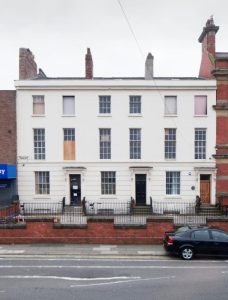
Chapters 4 to 8 describe the surge in new-built projects from the 1970s to the end of the century. The landmark mosques of the 1970s and 1980s—both built and unbuilt—illustrate the emergence of a distinct Muslim architectural identity in Britain. Purpose-built mosques of this period used references both to international Muslim architecture and to local vernacular styles. In the twenty-first century—partly due to 9/11 and its impact on Muslim life—mosques become an instrument of discourse that required them to appear historical. More recently, a new generation of mosques, such as the Shahporan Masjid and Islamic Centre by Saleem’s East-London-based practice Makespace Architects, represents a more diverse and vibrant British Muslim culture. Chapter 8 underscores how British mosques evolved organically through iterative, collaborative, and fragmentary processes. The chapter concentrates on how purpose-built mosques replicate historic styles of Islamic architecture.
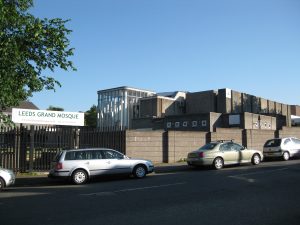
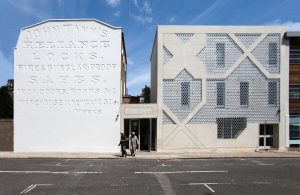
There are still very few studies of mosques in Western countries. Saleem’s book fits into the spectrum of single-country mosque books, such as Sun Dazhang and Qiu Yulan’s Islamic Buildings: The Architecture of Islamic Mosques in China (2015), Akel Ismail Kahera’s Deconstructing the American Mosque (2010), and Jerrilynn Denise Dodds and Edward Grazda’s New York Masjid (2002). Like Saleem’s book, Renata Holod, Hasan-Uddin Khan, and Kimberly Mims’ The Mosque and the Modern World (1997) considers cases across borders and cultures, few of them overlapping with those found in The British Mosque. Robert Hillenbrand’s Islamic Architecture (1994), often used as a textbook, and Kishvar Rizvi’s (2015) The Transnational Mosque, are relevant to Saleem’s approach, yet unfortunately they are missing from his bibliography. Rizvi’s book in particular could help clarify the contrast between British mosques, designed to embody bottom-up, democratic symbolism, and transnational mosques in Muslim countries, designed to embody the political ideologies of the regimes that build them. One such transnational example is the avant-garde Vali-e-Asr Mosque in the Iranian capital Tehran by Fluid Motion Architects’ Reza Daneshmir and Catherine Spiridonoff—a progressive scheme that has provoked heated criticism from historicists and conservatives.
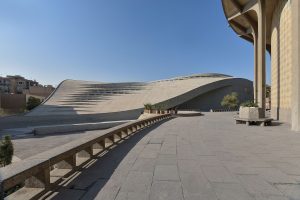
Saleem argues that beyond their formal qualities and religious purposes, mosques serve important cultural and symbolic functions. When Saleem is critical of mosque architecture, he criticizes formal qualities, alleging pastiche, stylistic indeterminacy, lack of sophistication, and outright failure of imagination. Yet such idiosyncratic formal expressions are valuable. The varied domes, minarets, and mihrabs create landscapes imbued with cultural differences and communal preferences. The formal critique is also disappointing because it leads away from discussions of social life. The book would be stronger if it directly addressed more controversial books, such as Thilo Sarrazin’s Deutschland schafft sich ab (Germany is Destroying Itself; 2010), which openly denounces Muslim immigration as a threat to German national identity and characterizes mosques as misplaced in German cityscapes. It is important for the ethical practice of architectural history to recognize the importance for minority communities of the diverse buildings they make.
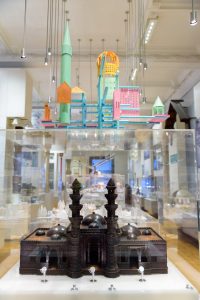
An architectural designer, researcher, and urbanist, Sara Khorshidifard is assistant professor and director of the Center for Community Studies at the Hammons School of Architecture, Drury University. Her scholarship follows a triple trajectory in urban-rural interface studies, architectural education, and Tehran studies. Her research examines synergistic interplays and symbiotic interconnections between intentionally designed and socially constructed spaces. Her studies engage new ways of thinking about cities beyond architectural objects, contemplating such other critical terrains as interiors, flows, and vestigial spaces.
How to Cite This: Khorshidifard, Sara. Review of The British Mosque: An Architectural and Social History, by Shahed Saleem, JAE Online, November 6, 2020.






